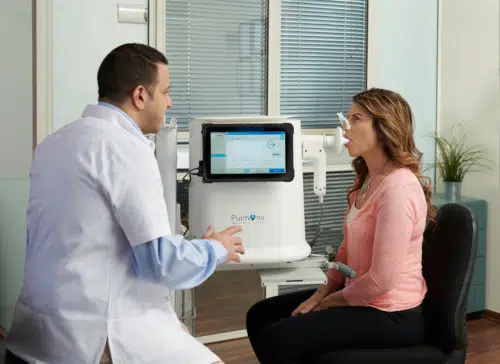
Allergy Shots
Allergy shots are administered on a regular basis exposing the body to a little amount of an allergen to establish immunity.
learn moreOur Name has Changed, but Our Commitment has Not
We’re proud to announce that we have officially rebranded from Dr. Randall Humphreys, Allergy ~ Asthma ~ Sinus to AllerVie Health – Panama City. This rebrand will enhance our digital patient experience and better serve patients now and in the future.
Learn MoreOur dedicated billing service is available to help answer questions about statements, pay bills over the phone, and set up payment plans. Call the phone number printed on your billing statement for the fastest resolution.
All new patients and services provided after January 8, 2024, call 866-238-0278. For services provided before January 8, 2024, call 850-522-5000.
Open Hours
Shot Hours
A New Era of Patient Care

At AllerVie Health in Panama City, Florida, we’re committed to providing expert and comprehensive care for allergies, asthma and related immunological disorders for adults and children.
Living in Panama City comes with the joy of experiencing fantastic weather and access to stunning beaches. However, if you’re burdened with pollen allergies, mold allergies or asthma, these pleasures may be hampered. You require specialized treatment to relish fully in all that Panama City offers.
Our qualified provider, Dr. Randall Humphreys, is dedicated to diagnosing and treating allergies in children and adults alike. With particular expertise in pediatric and adult-onset asthma, they are committed to enabling patients regain control of their lives, making the most of what Florida has to offer.
Our approach is personalized, with each treatment plan uniquely designed to manage your specific allergies or asthma effectively. We at AllerVie Health are here to ensure your health doesn’t prevent you from enjoying of life’s pleasures. Let us help you regain control of your allergies and asthma. Trust in our expertise and personalized care.
Pollen and mold levels are determined by the National Allergy Bureau and have been translated into four levels based on the counts for the majority of days and the averages over the years.
A low pollen count means that only people who are extremely sensitive to pollen and mold will have allergy symptoms.
A moderate pollen count means more people will have allergy symptoms.
A high pollen count means that most people with a sensitivity to pollen and/or molds can experience allergy symptoms.
A very high pollen count means that almost everyone who has an allergy to molds and pollen will experience symptoms.
Our board-certified allergists and advanced practice providers are ready to help you feel better. Make an appointment today to start your journey to allergy and asthma relief!
Make an Appointment
Allergy Shots
Allergy shots are administered on a regular basis exposing the body to a little amount of an allergen to establish immunity.
learn more
Allergy Patch Testing
Allergy patch testing is a common test used to confirm the cause of allergic contact dermatitis.
learn more
Pulmonary Function Tests
These tests help your provider diagnose and monitor asthma symptoms by measuring your overall lung health.
learn more
Blood Testing for Allergies
Blood tests can tell if someone has allergies by finding antibodies in the blood that react to allergens.
learn more
In partnership with AllerVie Clinical Research our patients in Destin have the opportunity to participate in the future of medicine. We have opportunities for patients to participate in asthma research, eczema research, food allergy research, immunodeficiency research and other clinical studies. Visit our clinical research website for a list of ongoing active studies.
Learn More About Clinical Research